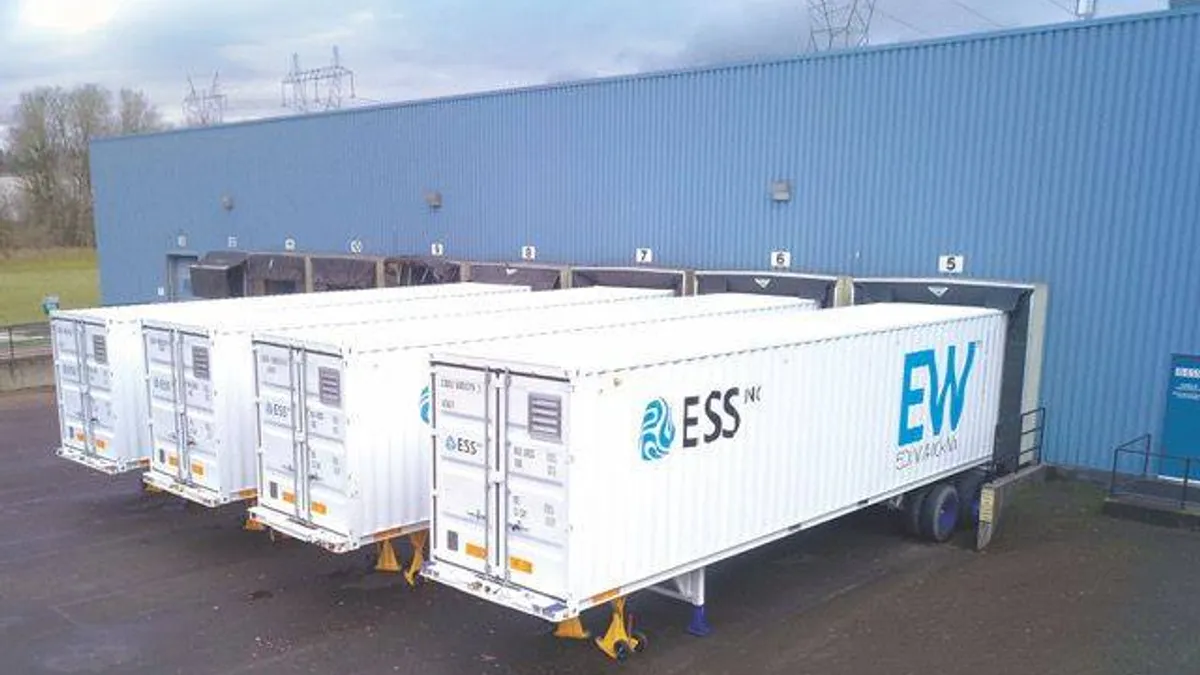Dive Brief:
- An analysis by Rutgers University, conducted at the direction of the New Jersey legislature, concludes the state's short-term energy storage target of 600 MW by 2021 will require between $140 million and $650 million in incentives if the systems are paired with renewables, though a slower rollout could lower costs.
- The report found two "familiar" technologies, pumped hydro and thermal storage, are cost effective, but lithium-ion costs must still drop before they are "cost-competitive for most applications."
- New Jersey became the fifth state to adopt energy storage targets last year when lawmakers voted to pursue 2,000 MW by 2030, along with the interim target coming up in two years.
Dive Insight:
Rutgers' analysis concludes that until lithium-ion battery prices decline further, they are really only cost effective in providing ancillary services for the bulk power market — though there may be other non-financial benefits.
Projects like increasing hosting capacity for decentralized solar, and increasing resilience in combination with customer-sited solar, are "battery storage applications with attractive net social benefits that do not yet yield positive returns for investors," the report found.
While necessary incentives for storage paired with renewable energy top out at $650 million, they could go higher. Lithium-ion storage installed for resiliency, without a solar component, would require incentives of between $430 million and $1 billion.
While researchers conclude "deploying systems more slowly will cost less," they also said in the medium-term, the "applications that are likely to help New Jersey realize a sustainable energy future include grid stabilization for offshore wind projects and electric vehicle charging stations."
Researchers also recommended areas for policymakers to improve the cost-benefit calculus for storage projects.
The value of storage can be improved by stacking value propositions, and Rutgers questioned what rules would be necessary to ensure customer-side applications can be stacked with distribution-level and bulk-level applications.
"This is likely to be an area where learning by doing is necessary to craft and then refine policies," the report said.
And while battery costs are dropping rapidly, university researchers warned many future cost reductions will need to come from soft costs, including permitting, customer acquisition and financial risk. The report recommends policymakers consider market rules to incentivize lower soft costs, encourage market learning and help investors achieve economies of scale.
The report also recommended the state "establish pilot programs and pursue a balanced portfolio to ensure that New Jersey gains experience with the bulk power system, distribution-level, and customer-side applications, and multiple technologies."
And given New Jersey’s "coastal vulnerabilities and its car-dependent economy," researchers said policymakers should prioritize "resiliency and EV applications."
New Jersey regulators have released a draft plan to help the state reach its 100% clean energy goal by 2050, and it includes a focus on electrification, renewables, energy storage, nuclear energy and grid modernization. Along with the storage targets, it calls for deploying 330,000 light-duty electric vehicles by 2025 and 3,500 MW of offshore wind capacity by 2030.















